The voltage V and current I graphs for a conductor at two different temperature T1andT2 are shown in the figure. The relation between T1andT2 is

T1>T2
T1<T2
T1=T2
T1=1T2
The correct Answer is:A
The slope of V−I graph gives the resistance of a conductor at a given temperature.
From the graph, it follows that resistance of a conductor at temperature T1 is greater than at temperature T2. As the resistance of a conductor is more at higher temperature and less at lower temperature, hence T1>T2.
Topper's Solved these Questions
- CURRENT ELECTRICITY BOOK - MTG GUIDECHAPTER - CURRENT ELECTRICITY EXERCISE - CHECK YOUR NEET VITALS
16 Videos
- CURRENT ELECTRICITY BOOK - MTG GUIDECHAPTER - CURRENT ELECTRICITY EXERCISE - MCQs AIPMT / NEET
32 Videos
- CURRENT ELECTRICITY BOOK - MTG GUIDECHAPTER - CURRENT ELECTRICITY EXERCISE - MCQs AIPMT / NEET
32 Videos
- ATOMS AND NUCLEIBOOK - MTG GUIDECHAPTER - ATOMS AND NUCLEIEXERCISE - AIPMT/NEET(MCQs)
40 Videos
- DUAL NATURE OF MATTER AND RADIATION BOOK - MTG GUIDECHAPTER - DUAL NATURE OF MATTER AND RADIATION EXERCISE - AIPMT/ NEET MCQs
30 Videos
Similar Questions
In an atom electrons revolves around the nucleus along a path of radius 0.72Ã… making 9.4×1018 revolution per second. The equivalent current is (e=1.6×10−19C)
View SolutionA potentiometer circuit is set up as shown. The potential gradient, across the potentiometer wire, is k volt/cm and the ammeter, present in the circuit, reads 1.0 A when two way key is swtiched off. The balance points, when the key between the terminals (i) 1 and 2 (ii)) 1 and 3, is plugged in, are found to be at lengths l1cmandl2cm respectively. The magnitudes, of the resistors R and X, in ohms, are equal, respectively, to

View SolutionA potentiometer circuit is set up as shown. The potential gradient, across the potentiometer wire, is k volt/cm and the ammeter, present in the circuit, reads 1.0 A when two way key is swtiched off. The balance points, when the key between the terminals (i) 1 and 2 (ii)) 1 and 3, is plugged in, are found to be at lengths l1cmandl2cm respectively. The magnitudes, of the resistors R and X, in ohms, are equal, respectively, to

View SolutionThe mass of a .73Li nucleus is 0.042u less than the sum of the masses of all its nucleons. The binding energy per nucleon of .73Li nucleus is nearly
View SolutionWhen monochromatic radiation of intensity I falls on a metal surface, the number of photoelectrons and their maximum kinetic are N and T respectively. If the intensity of radiation is 2 I, the number of emitted electrons and their maximum kinetic energy are respectively.
View SolutionShows graphs of pressure vs density for an ideal gas at two temperaturesT1andT2
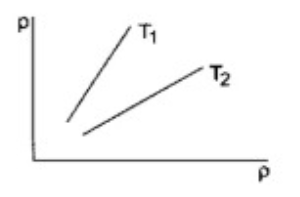
View SolutionThe current (I) and voltage (V) graphs for a given metallic wire at two different temperature (T1) and (T2) are shown in fig. It is concluded that
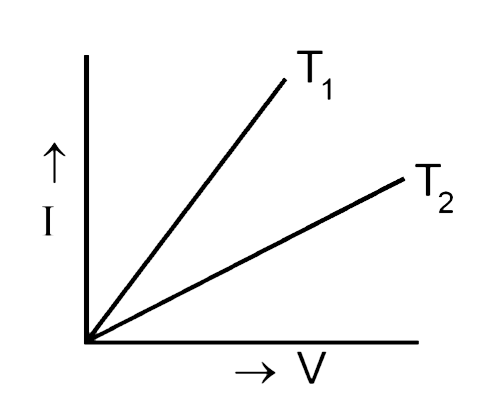
View SolutionThe voltage V and current I graph for a conductor at two different temperatures T_(1) and T_(2) are shown in the figure. The relation between T_(1) and T_(2) is
View SolutionThe V - i graph for a conductor at temperature T_(1) and T_(2) are as shown in the figure. ( T_(2) - T_(1)) is proportional to
View SolutionThe V-l graph for a conductor at temperatures T_(1) " and " T_(2) are as shown in the figure. The term T_(2) -T_(1) is proportional to
View SolutionThe voltage V and current I v graphs for a conductor at two different temperatures T1andT2 are shown in the figure. The relation between T1andT2 is

View Solutionचित्र में विभवांतर V और धारा I के बीच किसी चालक के दो ताप T1और T2 पर ग्राफ दिखाए गये गये है । T1और T2 में सम्बन्ध होगा -
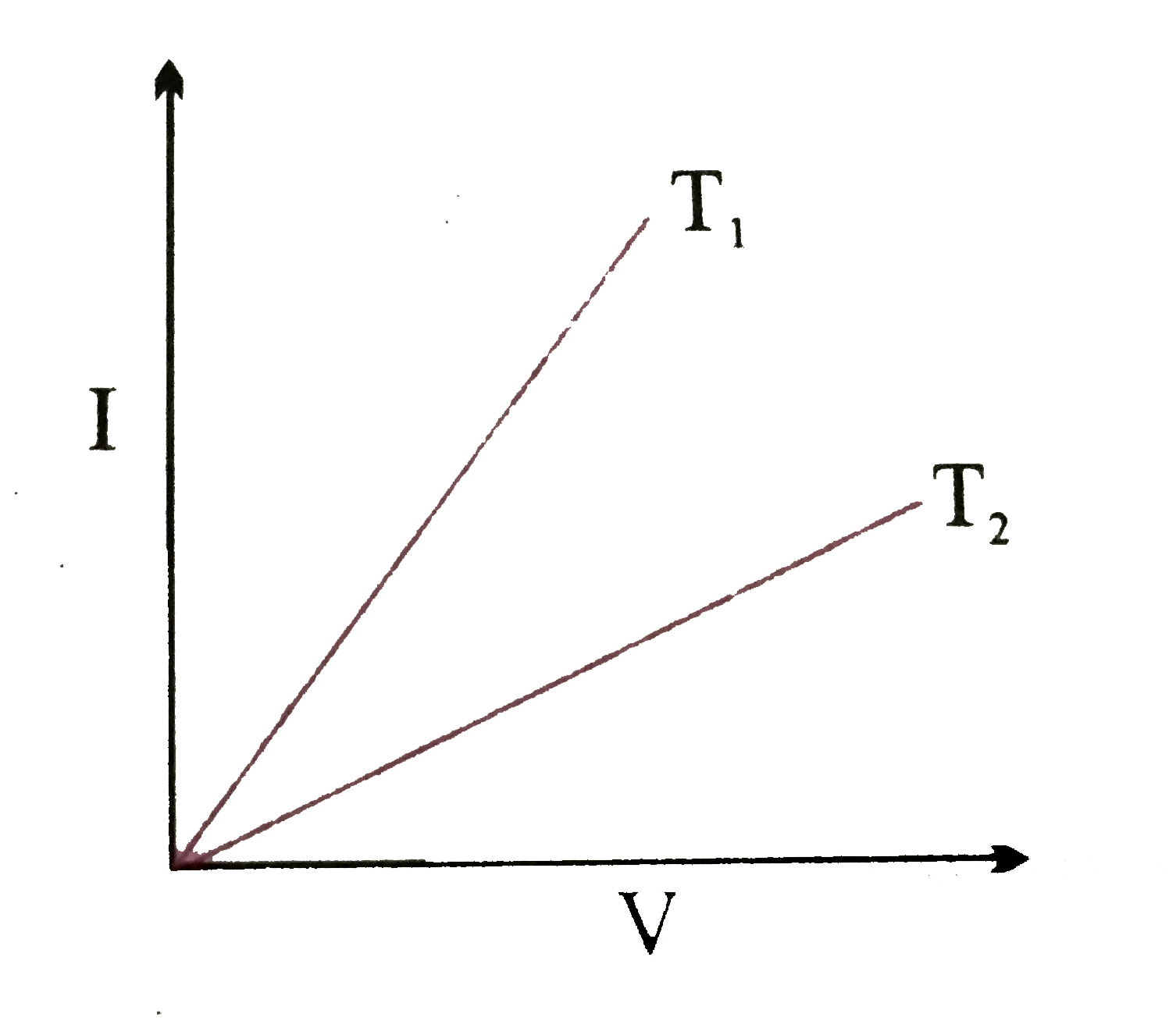
View SolutionThe current in a metllic conductor is plotted against voltage at two different temperatures T1andT2. Which is correct

View SolutionThe current-voltage graph for a given metallic conductor at two different temperature T1andT2 are as shown in the figure. Then
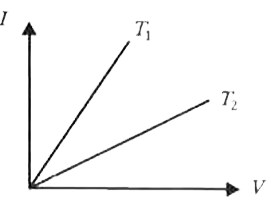
View SolutionThe voltage V and current I graphs for a conductor at two different tempratures T_(1) and T_(2) are shown in the figure .The relation between T_(1) and T_(2) is
View SolutionThe voltage-current (V-I) graph of a metallic conductor at two different temperatures T1 and T2 is shown below. At which temperature is the resistance higher ?
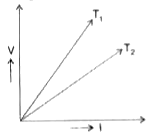
View Solution

